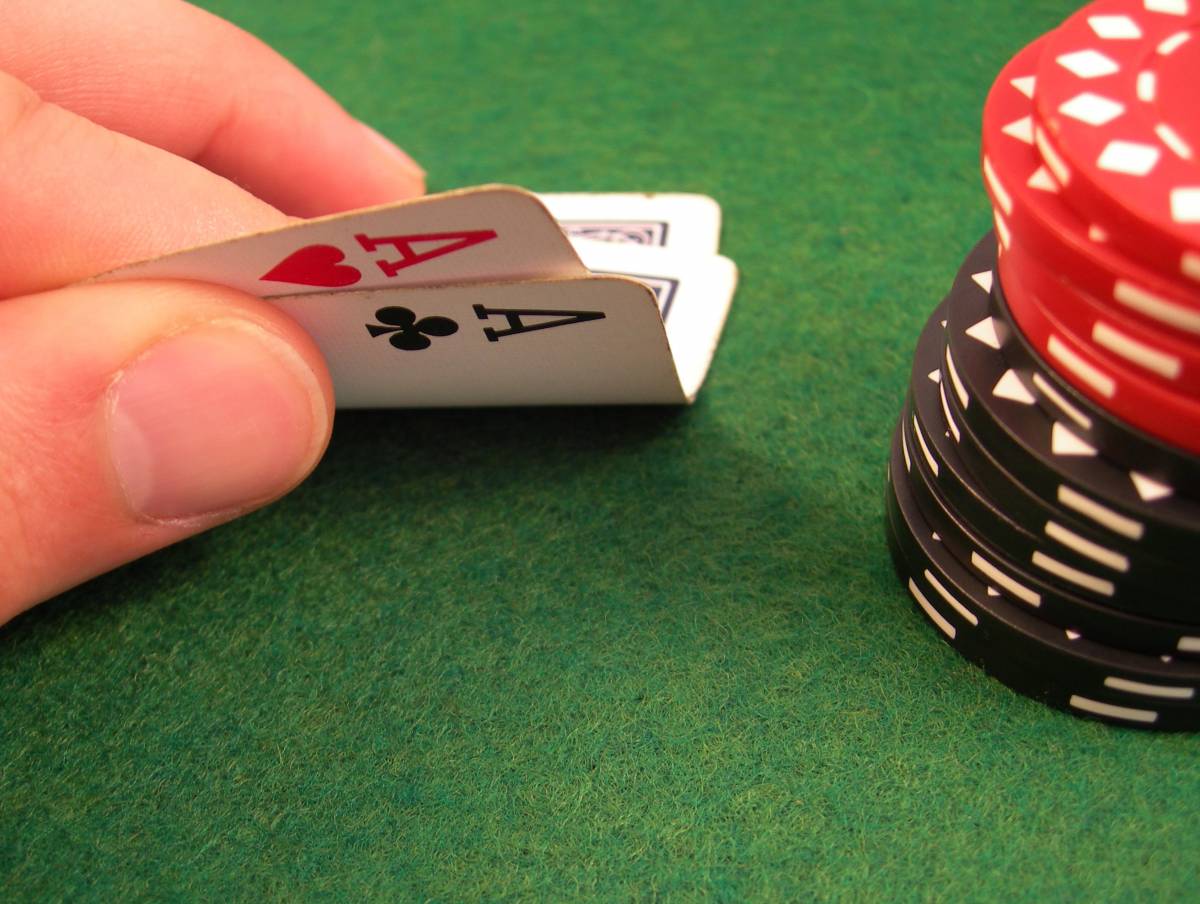Introduction
What Are Blinds In Texas Holdem: In Texas Hold’em, blinds are a fundamental aspect of the game that introduces forced bets to create initial action and establish the pot. As one of the most popular variants of poker, Texas Hold’em is known for its strategic gameplay and community card dynamics, and the concept of blinds plays a crucial role in shaping the flow of each hand.
Blinds are mandatory bets that players are required to place before the start of each hand. They differ from antes, which are mandatory bets placed by all players in certain poker games. In Texas Hold’em, only two players, known as the small blind and the big blind, are obligated to post these forced bets.
We will delve into the significance of blinds in Texas Hold’em and their impact on the game’s dynamics. We will explore the roles of the small blind and big blind, how they rotate around the table with each hand, and their effects on subsequent betting rounds. Understanding blinds is essential for any player seeking to excel in Texas Hold’em, as they influence betting strategies, position play, and overall hand selection.
Whether you are a novice player or looking to enhance your understanding of Texas Hold’em, this article will provide valuable insights into the concept of blinds and their importance in this thrilling and strategic poker game.

What are blinds on Texas Holdem?
There is usually a small blind and a big blind in Texas Hold’Em. You can think of the big blind as the “full” ante for the round. The small blind is typically half of the big. The blinds are paid by the two players to the left of the dealer.
In Texas Hold’em, blinds are forced bets that players are required to place before the start of each hand. Blinds are an essential part of the game as they create the initial pot and ensure there is always something to play for, even if some players fold their hands.
There are two types of blinds in Texas Hold’em: the small blind and the big blind. The player to the left of the dealer is designated as the small blind, and the player to their left is the big blind. The small blind is typically half the size of the big blind.
Before the cards are dealt, the players in the blinds must place their bets. The small blind bets the predetermined amount, and the big blind bets twice that amount. These bets are mandatory, and all players at the table take turns being in the blinds as the dealer position rotates clockwise after each hand.
Blinds serve several purposes in Texas Hold’em. First, they ensure there is action and money in the pot right from the start of the hand. Second, they create an incentive for players to play hands and avoid overly tight or passive play. Third, they help to dictate the flow of the betting rounds, leading to more strategic decision-making as the hand progresses.
Overall, blinds are a fundamental aspect of Texas Hold’em and add an element of structure and strategy to the game. They play a crucial role in shaping the dynamics of each hand and the overall flow of the game.
How do you play Texas Holdem with blinds?
In order to start betting in Hold’em, forced bets (known as blinds) are made by the two players immediately clockwise from the dealer button. The person immediately clockwise from the dealer has the small blind, and the next player clockwise has the big blind.
Playing Texas Hold’em with blinds involves following a structured betting format where players in designated positions are required to make forced bets before the hand begins. Here’s a step-by-step guide on how to play Texas Hold’em with blinds:
1. Blinds Setup: Determine the small blind and big blind amounts before starting the game. The small blind is usually half the size of the big blind.
2. Deal the Cards: The dealer shuffles a standard 52-card deck and deals two private cards face down to each player. These are known as hole cards.
3. Small Blind Bet: The player to the left of the dealer places the small blind bet, which is half the size of the big blind.
4. Big Blind Bet: The player to the left of the small blind places the big blind bet, which is twice the size of the small blind.
5. Pre-Flop Betting: Starting with the player to the left of the big blind, each player has the option to call (match the big blind), raise (increase the bet), or fold (discard their hand and forfeit the round). The betting continues in a clockwise direction until all players have either folded or matched the highest bet.
Texas Hold’em with blinds is a dynamic and strategic poker game, combining both luck and skill. Players must make strategic decisions based on their hand strength, position, and the betting actions of other players to succeed in this popular and exciting poker variant.
Do you have to play the blind in Ultimate Texas Holdem?
In Ultimate Texas Hold’em, players have several betting options. To start the hand, players must make equal bets into the ante and blind circles. Players may also make the optional Trips bonus bet. Ante and blind circles: Prior to the hand, each player must make equal bets into each of these circles.
In Ultimate Texas Hold’em, players do not have to play the blind bet, also known as the “Blind” or “Ante” bet. Ultimate Texas Hold’em is a casino poker game that differs slightly from traditional Texas Hold’em played in poker rooms. In this game, players compete against the dealer rather than each other.
Here’s how the betting works in Ultimate Texas Hold’em:
1. Ante Bet: Before the hand starts, all players must place an ante bet. The ante bet is a mandatory bet required to participate in the hand.
2. Blind Bet (Optional): After placing the ante bet, players have the option to make a blind bet, which is typically twice the size of the ante bet. The blind bet is also called the “Play” or “Trips” bet.
3. The Deal: After all players have placed their ante and optional blind bets, the dealer deals two private cards (hole cards) to each player and two community cards face down on the table.
4. Betting Decision: At this point, players can choose to either “Fold” and forfeit their ante and blind bets or “Play” by making an additional bet, which is equal to the ante bet. Players who made the blind bet earlier do not need to make this additional “Play” bet.
5. Community Cards: After all players have made their “Play” or “Fold” decisions, the dealer reveals the three community cards known as the “Flop.”
Does big blind go first in poker?
In games that include the blinds and a button (like Texas Hold’em), the player to the direct left of the big blind always goes first in the preflop betting round. The action then moves clockwise around the table, with the player in the big blind the last to act preflop.
In poker games where blinds are used, the big blind does not go first in the initial betting round. Instead, the player to the left of the big blind goes first. The betting action proceeds in a clockwise direction around the table.
Here’s the order of play in the initial betting round with blinds:
Big Blind: The player to the left of the small blind posts the big blind, which is typically the minimum bet for the hand.
First Betting Action: After the blinds are posted, the betting action starts with the player to the left of the big blind. This player has the option to call (match the big blind), raise (increase the bet), or fold (discard their hand and forfeit the round).
Continuation of Betting: The betting action continues in a clockwise direction around the table until all players have either folded, called the highest bet, or raised.
Once the initial betting round is complete, the dealer proceeds to deal the community cards (flop, turn, and river) in games like Texas Hold’em. After each new community card is revealed, there is a new round of betting starting with the player to the left of the dealer or button position.
The player in the big blind position typically has the last betting action in the initial betting round. However, this does not mean they are the first to act on subsequent betting rounds after the flop, as the order of play rotates clockwise with each new round of betting.

How many big blinds are there in poker?
In a standard cash game you can buy in to a maximum of 100 big blinds (this is written as 100bb). When talking about a stake, you talk about it in terms of a 100bb stack.
In poker, the number of big blinds can vary depending on the specific poker variant and the structure of the game being played. The term “big blinds” refers to the size of the mandatory bet posted by the player sitting in the big blind position before the start of each hand. It is typically the minimum bet for the hand and is used to create the initial pot.
In Texas Hold’em, which is one of the most popular poker variants, the number of big blinds can change throughout the course of a cash game or tournament. In cash games, players buy-in for a certain amount of chips, and the number of big blinds they have at any given moment depends on their chip stack relative to the current big blind size.
For example, if a player buys in for 1000 chips in a cash game and the big blind is 10 chips, they would start with 100 big blinds. As the blinds increase, the number of big blinds in a player’s stack decreases, influencing their strategy and decisions.
In tournaments, the number of big blinds is a crucial indicator of a player’s relative stack size compared to the blinds and antes. It helps players understand their position in the tournament and make strategic moves accordingly, such as deciding when to be aggressive, when to play conservatively, and when to make a stand.
Overall, the number of big blinds is a key metric in poker that players use to gauge their chip stack’s strength and adapt their strategies to the current game conditions.
What is the purpose of blinds in Texas Hold’em, and how do they create initial action in each hand?
The purpose of blinds in Texas Hold’em is to create initial action and establish a starting pot for each hand. Blinds are forced bets that players in specific positions are required to place before the cards are dealt. They play a crucial role in shaping the dynamics and strategy of the game.
The small blind and big blind are the two types of blinds used in Texas Hold’em. The player to the left of the dealer posts the small blind, which is typically half the size of the big blind. The player to the left of the small blind posts the big blind, which is usually the minimum bet for the hand.
Blinds create initial action by requiring players to have a stake in the hand right from the start. The small blind must place a bet even before seeing their cards, encouraging participation in the hand. The big blind, being the largest forced bet, further stimulates action as players must consider whether to defend their investment or fold their hands.
The presence of blinds also influences players’ betting decisions. Players in later positions may choose to raise or fold based on the size of the blinds, attempting to gain an advantage over those in the blinds. Conversely, players in the blinds may opt to call or raise if they have strong hands to protect their investment.
Overall, blinds are a fundamental aspect of Texas Hold’em, introducing strategy, position play, and excitement to each hand. By creating initial action and incentivizing participation, blinds ensure that there is always something at stake, making Texas Hold’em an engaging and dynamic poker variant.
How do the roles of the small blind and big blind differ, and what impact do they have on players’ betting decisions?
The roles of the small blind and big blind in Texas Hold’em differ in terms of the amount of the forced bet and their positions relative to the dealer button. These differences have a significant impact on players’ betting decisions and strategies.
1. Small Blind: The small blind is the forced bet placed by the player sitting to the left of the dealer button. It is typically half the size of the big blind. The small blind has the disadvantage of being the first to act in the post-flop betting rounds. This position is known as being “out of position,” as they act before most other players.
Impact on Betting Decisions: Being in the small blind, players must invest a portion of their chips before seeing their hole cards. This makes the small blind more likely to play hands that they might otherwise fold, especially if the amount of the small blind is relatively small compared to their chip stack.
2. Big Blind: The big blind is the forced bet placed by the player sitting to the left of the small blind and two seats to the left of the dealer button. It is typically the minimum bet for the hand. The big blind has the advantage of acting last in the pre-flop betting round and second-last in the post-flop betting rounds.
Impact on Betting Decisions: As the big blind, players have already invested a significant portion of their chips before seeing their hole cards. This may incentivize them to defend their blind by calling or raising, especially against aggressive players trying to steal the blinds.
In summary, the small blind and big blind positions have distinct differences in forced bet sizes and their positions relative to the dealer button. These differences influence players’ betting decisions, with the small blind often playing more cautiously, and the big blind being more likely to defend their bet and act with the advantage of position. Understanding these roles is crucial for developing effective strategies and adapting to the dynamics of Texas Hold’em poker.
Why is understanding the concept of blinds crucial for players looking to improve their strategies and position play in Texas Hold’em?
Understanding the concept of blinds is crucial for players looking to improve their strategies and position play in Texas Hold’em for several reasons:
1. Betting Structure: Blinds introduce a unique betting structure in Texas Hold’em, creating forced bets that players must place before the hand starts. This structure significantly impacts the pot size and the action in each hand, influencing players’ betting decisions and strategies.
2. Position Play: Blinds determine players’ positions in the betting order for each hand. Players in early positions, such as the small blind and big blind, act first in subsequent betting rounds, while players in later positions have the advantage of acting with more information. Understanding the impact of position helps players make better decisions on when to play aggressively, call, or fold.
3. Pot Odds and Implied Odds: Blinds are part of the initial investment in a hand, and players must consider pot odds and implied odds when deciding to call or raise. Understanding the relationship between the size of the blinds and potential winnings helps players make more informed and profitable decisions.
4. Blind Stealing: Being in the blinds, especially the big blind, exposes players to blind stealing attempts from opponents. Understanding when to defend the blinds and when to let them go is essential for protecting one’s chip stack and avoiding unnecessary losses.
5. Tournament Strategy: In tournament play, blind levels increase as the game progresses, putting pressure on players’ chip stacks. Understanding the importance of accumulating chips early on and adjusting strategies as blinds increase is critical for tournament success.
Overall, comprehending the concept of blinds enhances a player’s ability to make strategic decisions, adapt to different positions, and manage their chip stack effectively. It forms the foundation for more advanced poker strategies, allowing players to develop a well-rounded and competitive approach to Texas Hold’em.

Conclusion
Blinds are a fundamental aspect of Texas Hold’em, serving as forced bets that shape the dynamics and strategy of each hand. The small blind and big blind create initial action and ensure there is always something to play for, even if some players fold their hands. Understanding the concept of blinds is essential for any player looking to excel in this popular and strategic poker variant.
Blinds play a crucial role in determining the betting order and position play throughout the hand. The rotation of blinds around the table ensures that each player has an equal opportunity to be in different positions relative to the dealer, impacting their decision-making and betting actions.
The small blind, being the first forced bet, encourages players to enter the pot and play more hands. The big blind, being the largest forced bet, provides an initial investment for the pot and incentivizes players to protect their investment by defending their blinds or making strategic plays.
Blinds also influence betting strategies, as players must consider the size of the blinds relative to their stack when deciding to call, raise, or fold. Additionally, blinds affect hand selection, with players in the blinds needing stronger hands to justify defending their bets against potential raises from later positions.
Overall, blinds are an integral part of Texas Hold’em, contributing to the excitement, strategy, and complexity of the game. Understanding their significance and incorporating them into your gameplay will elevate your poker skills and enhance your overall experience in this thrilling and competitive card game.










